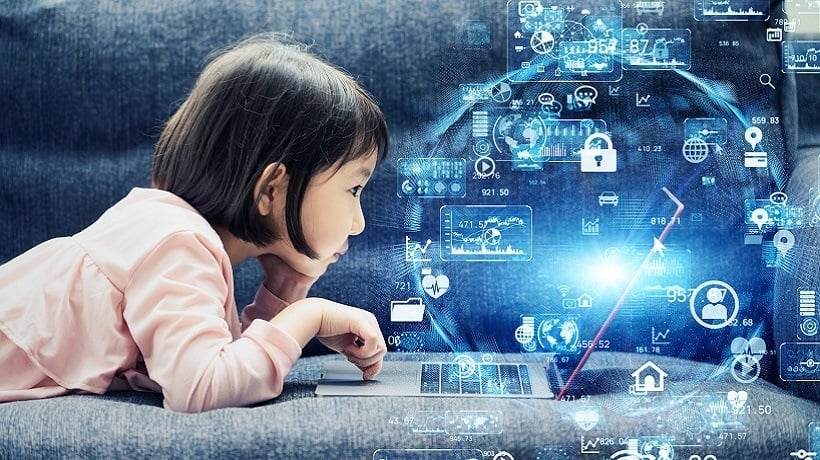The educational landscape is undergoing a remarkable transformation, driven by innovative technologies that enhance how students learn, and educators teach. As we explore the latest trends in educational technology, several key areas stand out, showcasing the potential to create personalized, engaging, and effective learning environments.
Predictive analytics is emerging as a powerful tool in education. These systems leverage data to forecast student performance and identify potential challenges before they become significant issues. For example, platforms like Fulcrum’s predictive analytics can assess not just current performance but also behavioral patterns and confidence levels, allowing educators to intervene proactively and tailor support effectively.
At the forefront of educational innovation are adaptive learning technologies. These systems leverage artificial intelligence and data analytics to tailor educational experiences to individual learners. For instance, platforms like Knewton and Realizeit adjust the difficulty of content based on student performance in real time, ensuring that each learner receives support suited to their unique needs. Coursera employs similar techniques by analyzing student behavior to dynamically modify lesson pacing and complexity, enhancing the overall learning experience.
Adaptive learning technologies are particularly beneficial for students with special needs. Recent studies indicate that personalized learning strategies have led to significant improvements in performance for students with disabilities, showcasing the potential of technology to foster inclusivity in education.
Another excellent example is Mathspace, which combines video modules with interactive quizzes tailored to individual progress. This approach not only reinforces concepts but also allows students to navigate through materials at their own pace, ensuring mastery before advancing.
The rise of online learning platforms has revolutionized access to education. Platforms such as LinkedIn Learning, Udemy, and edX provide a vast array of courses across various subjects, enabling learners to pursue knowledge at their convenience. LinkedIn Learning utilizes adaptive algorithms to suggest courses that build on previously acquired skills, while Udemy personalizes entire course recommendations based on user engagement and preferences.
Additionally, Rosetta Stone exemplifies adaptive learning in language acquisition by adjusting lesson difficulty according to users’ proficiency levels and providing targeted feedback through speech recognition technology.
Virtual reality (VR) and augmented reality (AR) are making significant strides in education by offering immersive experiences that engage students in unprecedented ways. For example, platforms like Nearpod incorporate VR elements into lessons, allowing students to explore historical sites or scientific phenomena interactively. AR applications can overlay digital information onto physical environments, enhancing learning through real-world context.
Incorporating game elements into educational activities, known as gamification, is another trend gaining traction. Platforms like Prodigy Math and Kahoot! use game mechanics to motivate students and make learning enjoyable. By transforming assessments into interactive challenges, these tools not only boost engagement but also improve knowledge retention.
Technology has also facilitated enhanced collaboration among students and educators. Tools such as Google Workspace, Microsoft Teams, and Slack enable seamless communication and teamwork across geographical boundaries. These platforms foster an environment where students can work together on projects in real time, developing critical collaboration skills essential for the modern workforce.
The integration of robotics in education extends beyond traditional STEM subjects. Educational robots like those used in coding classes teach problem-solving skills while providing hands-on experiences that enhance understanding of complex concepts. Additionally, robots can assist in special education settings by offering personalized support tailored to diverse learning needs.
Despite the myriad benefits of educational technology, challenges remain. The digital divide poses a significant barrier, as not all students have equal access to devices or high-speed internet. Addressing this gap is crucial for ensuring equitable access to technology-enhanced education. Furthermore, concerns about privacy and security arise with increased reliance on digital tools. Educational institutions must prioritize robust cybersecurity measures to protect sensitive student data.
The successful implementation of educational technology hinges on effective teacher training. Continuous professional development programs are essential to equip educators with the skills necessary to integrate these tools into their teaching practices effectively. Schools must prioritize ongoing support to ensure that teachers feel confident in utilizing technology to enhance student learning outcomes.
The evolution of educational technology is reshaping how we approach teaching and learning. With adaptive learning technologies leading the way alongside online platforms, immersive experiences through VR/AR, gamification strategies, collaborative tools, and robotics, the future of education looks promising. However, addressing challenges such as the digital divide and privacy concerns remains essential for fostering an inclusive educational environment where all learners can thrive. As we navigate this digital frontier, balancing technological advancements with traditional academic approaches will be key to creating effective and meaningful educational experiences.

